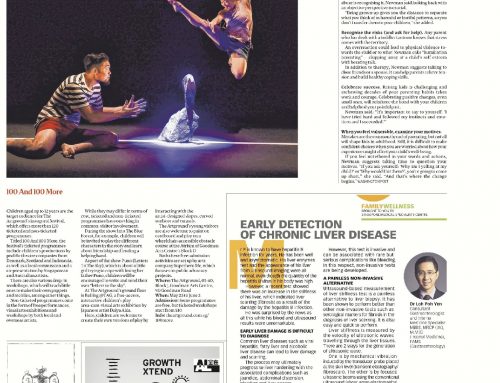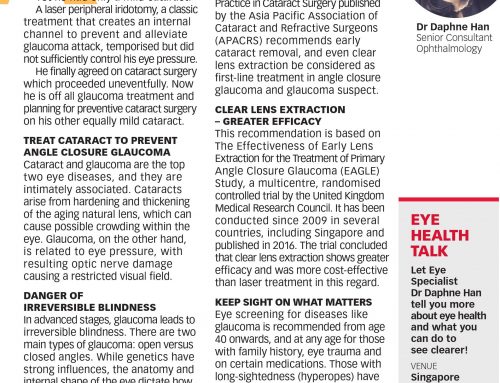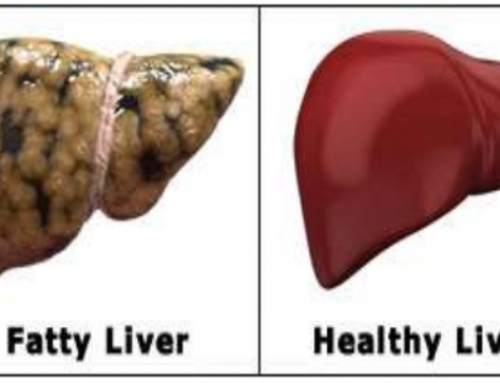Publication: The Business Times 29/10/2011
When dealing with infections, doctors need to have some clear ideas what to look for. By Chong Yeh Woei
I SEE infections in my patients on a daily basis. Quite a number come in with coughs and colds, some come in with diarrhoea, cramps and vomiting and there is the occasional urinary tract infection.
I would say that infections constitute a large proportion of our work as medical professionals. In dealing with infections we need to have some clear ideas what we are looking for. Very often the patient walks in the door and complains about a source of infection. The source in this case would be obvious, as “I have a sore throat” or “I had diarrhoea last night” to “it hurts when I urinate”.
Therefore the first category of patients would have an obvious source. These include throat infection or pharyngitis, intestinal infection or gastroenteritis and urine infection or urinary tract infection. Diagnosis of these obvious infections is not too difficult for the doctor.
On the other hand there is a second category of patients where the source is hidden, occult or not obvious at all. These patients would come into our practice and have a fever, but may not be certain where the site of the infection is. These hidden infections include a sinus infection, infected gallbladder or appendix, buttock infection or even a prostate infection.
The doctor would have to be more vigilant to look for such hidden sites. The symptoms exhibited by the patient may be quite subtle and very often the doctor has to have a high index of suspicion to diagnose these conditions.
I would illustrate the situation with an example of a sinus infection. A sinus infection may present with a headache that is worse with coughing, jarring of the head or descent in an aircraft. There maybe post nasal drip with thick viscous coloured mucus. Sometimes there is a bad odour coming from the sinuses, facial pain over the cheekbones or toothache in the upper teeth as the root of the tooth is just below the maxillary sinus inside our cheekbones.
Patients with sinusitis also feel exceptionally tired as the infection is in their head and face. I have patients who were proven to have sinusitis with none of the symptoms above. I would label these patients as having occult sinusitis. To prove how difficult it may be to diagnose sinusitis, sometimes doctors have to order a CT scan of the sinuses to be sure of the diagnosis.
Categories of infections
You can imagine how easy or difficult it may be to diagnose an appendicitis or an infected gallbladder. On the one hand there are patients with classical symptoms, but there will always be patients who present in a different manner. For abdominal infections, we may have to resort to CT scans; for a buttock infection, one may not diagnose it if the patient did not expose himself adequately during examination. For both buttock and prostate infections, the doctor may need to do a rectal examination to diagnose the condition.
There are two more categories of infections and one of them is called septic shock. These are patients who are very ill and are usually found in intensive care. The bacteria infection has spilled over from the source into the blood stream and that has triggered a drop in blood pressure that is also known as “shock”. These patients are unlikely to be found in an office setting.
The final group of patients that can walk into my office with fever for a week or two are the patients with an RE infection. RE stands for Reticulo Endothelial and that essentially means the lymph nodes in your body. There are a few groups of lymph nodes and they are located around your neck, in your armpits and on both sides of the groin. The liver and spleen are also part of the RE system and they can be regarded as two gigantic lymph nodes.
The infections that attack the RE system included viruses such as influenza, dengue, Hepatitis viruses and the Epstein Barr virus that gives you infectious mononucleosis. There are also bacterial infections such as typhoid and parasite infections such as malaria that can attack the RE system.
After outlining the various ways to look at infections, I would like to spend some time on the common sore throat or Upper Respiratory Tract Infection (URTI). A sore throat may be a simple pharyngitis; or it could be one of the other four possible diagnosis.
A URTI can be attributed to a tonsil infection, the tonsil is part of a ring of lymph nodes that encircle the throat internally. This is because most infections like viruses or bacteria enter the body via the throat.
Other possibilities include a sinus infection that I have spoken about, middle ear infection that is located behind the eardrum and a mastoid infection that is present in the bony prominence behind our ears.
I have chosen to highlight all these difficulties the doctor has in diagnosing some of these infections. I would urge patients to be more mindful of helping their doctor to achieve the correct diagnosis. Do offer details of travel if they are relevant to your illness.
Finally do go back to the same doctor if you are not getting better despite his treatment. Time may be necessary to let an infection rear its ugly head.





